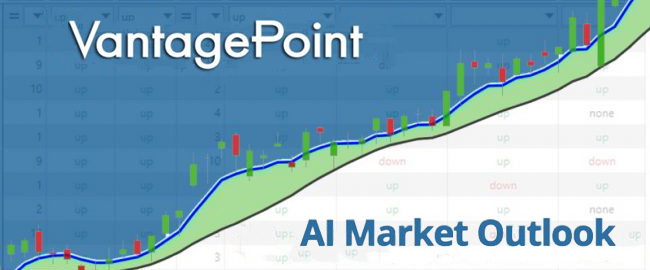How Blockchain Technology Could Help Our Elections
Do you think that the American electoral process is broken? Your answer might depend on whether or not your candidate won the recent presidential election. That would then mean about 50% of the country does not believe in the integrity of the elections. This is highly problematic for democracies. If citizens do not believe in the integrity of the voting process, how effective can a constitutional republic be? I’m not cheering for one candidate or the other here. Instead, it’s possible our current electoral process has become highly flawed, vulnerable, and ripe for disruption.
Chances are very high that you would agree that in a time of technological advancement which includes self-driving cars and artificial intelligence that we, as a country, should seriously explore better election processes.
Our elections seem to be mired in conflict and uncertainty. What can be done with technology to eliminate uncertainties entirely?
Today, citizens hope their vote is counted and their voice is heard, but more and more this is an act of faith and not a certainty.
The purpose of an election is to provide citizens and their leaders with clear consensus and understanding of where everyone stands on the issues which were central to the electoral process. It truly is difficult to understand how in the age of high tech, how a paper balloting system can still exist. Our current process seems primitive and requires tremendous manpower for it to function. Why does it take weeks for recounts to occur? Why do some states finish counting their votes very quickly while others remain contested for weeks at a time?
The electoral process should be about building consensus. The reality is it’s all about gaining power. We should all want truth. The idea of fraud or broken electoral processes should terrify all citizens who value democracy.
In the 2000 Presidential Election, George W. Bush ran against Al Gore. The election carried on for 37 days and required the Supreme Court of the United States to decide on who the winner was. During the contest, poll workers and lawyers contested every possible nuance of a voting ballot to try and sway the count further in their favor. At the time I became very disillusioned that this is how a democracy should function.

Today, only one week after the election, we have Democrats anxious to move on to the inauguration while Republicans are bracing themselves for a huge legal battle over highly speculative ‘fraud’ and what they term election irregularities in the important election swing states. The country is trapped in competing narratives and completely polarized because the losing side does not want to believe the results of the electoral process. Narratives are stories that both sides of the aisle tell themselves when they are unable to see and verify the actual truth of the situation.
Statistics is the science concerned with developing and studying methods for collecting, analyzing, interpreting and presenting empirical data. Today, hundreds of PhD statisticians have been enlisted to factually prove that massive fraud occurred in the 2020 Presidential race. These number crunchers are highly skilled at showing how fraud in other industries occurs because of their expertise and understanding of numerical uncertainty and variances. This allows them to do forensic research that defines irregularities mathematically.
Calling upon statisticians is all the evidence we need to recognize the paper balloting process presents huge vulnerabilities which are a threat to our democracy. In its place we should carefully examine the possibilities of blockchain technology to power our elections.
As a technology, blockchain is quickly becoming unrivaled. In its most basic form, blockchain is a decentralized digital ledger. What makes the blockchain so unique and powerful is that it draws its power from the other computers on the network which all verify, record and process all transactions simultaneously. Due to its encryption and decentralization, blockchain’s database of transactions is incorruptible, and each record is easily verifiable. Blockchain has grown in popularity over the last decade because it is a consensus building mechanism. All nodes on the network must agree that a transaction is valid before it can be recorded. More importantly all transactions are time stamped and create a permanent immutable history of events which is transparent for the entire world to inspect.
Your vote on the blockchain would be guaranteed its sanctity and would ensure public trust because it cannot be manipulated, changed, altered, stolen or destroyed in any manner.
Your vote would remain completely anonymous but would also be completely traceable and trackable, which is a luxury that does not exist in the current paper balloting process.

Additional votes would be impossible to add. A blockchain’s many nodes mean there is no central authority that can make changes to it, removing the risk of that entity acting maliciously or being co-opted. Instead changes can only be made by consensus.
This kind of system infrastructure is very useful for voting because a vote is a small piece of data. The blockchain could ensure each registered voter is authorized to vote only once. Registration to the voter blockchain could easily be implemented through identity verification procedures accompanied by fingerprint or iris scans which are used by big data corporations and intelligence agencies to ensure integrity. These biometric identifiers are a potential way to minimize voter fraud. The internet also allows organizations to more creatively design elections than ever before.
There are many companies committed to bringing blockchain to the voters.
Among them are:
Horizon State
FollowMyVote
BitCongress
Voatz.com
Scytl
Agora Vote
Estonia has had online electronic voting since 2005 and in 2007 was the first country in the world to allow online voting. In the 2015 parliamentary election, 30.5% of all votes were made though the nation’s i-voting system. Russia has already experimented with blockchain-based electronic voting and has also published the source code for the platform on GitHub. Likewise, the French commune of Verneuil-sur-Seine implemented a recent community vote through a blockchain app. Also, the Michigan Democratic Party recently used the VOATZ app in a successful electronic voting experiment.
Currently, the blockchain technology is still in its infancy, but it looks to be a key part of our collective future. Many in the crypto and blockchain communities believe voting technology advancements can and will provide a new method of voting that is more secure, easier, and will allow for more people to perform their basic civic duty.

Charlie Munger of Berkshire Hathaway once commented, “show me the incentives and I will show you the outcome.” He was referring to companies dealing with productivity issues, but he might as well have been talking about democracies. When Munger made the comment, he was referencing a case study he read about the early days of Federal Express. The challenge FedEx was having was that they needed to transfer packages between planes quickly and regardless what they tried they were unsuccessful. One day, they realized that the employees who were vested in making the transfer occur all worked on an hourly basis. The employees were incentivized for the work to take longer. Once FedEx changed how the employees were compensated, the transfers of the packages occurred much more quickly.
Likewise, there are vested political interests who are incentivized by an inefficient paper balloting electoral process. We are constantly told that there is no fraud in our elections, however, statisticians would argue that massive irregularity exists on both sides of the aisle. Fraud on both sides of the aisle does not balance out corruption.
This should concern every voter. Maybe it’s time to empower technology that can help citizens focus on building consensus for better governance.
Change politically unemploys scores of people dependent upon the system staying the same.
Technological change is what moves societies forward. Consider for a moment the power of the internet. It’s still a relatively new technology which continues to disrupt and dematerialize industries by offering better solutions. However, the internet initially was perceived as a massive threat to all established interests.
Likewise, finance has been massively disrupted by the possibilities of artificial intelligence.
Unless you’ve been living under a rock for the entirety of 2020, you’re probably aware that we are seeing volatility that can quickly destroy the informed investors portfolio very quickly.
But for the trader armed with A.I., volatility is your best friend because it creates more motion, which creates more opportunity for profit.
Post-election is where things get REALLY interesting!
The talking heads all promote massive fear.
The headlines emphasize the negative.
And investors lick their wounds all over again.
How do you make sense of a world that seems to be destined to travel to negative interest rates in the credit markets? What tools are you going to use to quickly and efficiently define risk and opportunity?
What have your results been like in 2020?
Artificial intelligence keeps doing what it was designed to do. Prevent massive losses and keep traders on the right side of the trend.
Have you ever wondered, as I have what makes the biggest difference in a trader’s life?
The difference lies in what each trader knows and how they use that knowledge. Trading with artificial intelligence plugs you in to that powerful simplicity quickly and easily.
Who do you think does better moving forward, man or A.I.?
Are you capable of finding those markets with the best risk/reward ratios out of the thousands of trading opportunities that exist?
Knowledge. Useful knowledge. And its application is what ai delivers.
Artificial intelligence is not “a would be nice to have” tool.
It is an “absolutely must-have” tool to flourish in today’s global markets. It teaches you when to sit on your hands and practice patience as well as when to aggressively position yourself for the high probability trade.
Visit With US and check out the A.I. at our Next Live Training.
It’s not magic. It’s machine learning.
IMPORTANT NOTICE!
THERE IS SUBSTANTIAL RISK OF LOSS ASSOCIATED WITH TRADING. ONLY RISK CAPITAL SHOULD BE USED TO TRADE. TRADING STOCKS, FUTURES, OPTIONS, FOREX, AND ETFs IS NOT SUITABLE FOR EVERYONE.
DISCLAIMER: STOCKS, FUTURES, OPTIONS, ETFs AND CURRENCY TRADING ALL HAVE LARGE POTENTIAL REWARDS, BUT THEY ALSO HAVE LARGE POTENTIAL RISK. YOU MUST BE AWARE OF THE RISKS AND BE WILLING TO ACCEPT THEM IN ORDER TO INVEST IN THESE MARKETS. DON’T TRADE WITH MONEY YOU CAN’T AFFORD TO LOSE. THIS ARTICLE AND WEBSITE IS NEITHER A SOLICITATION NOR AN OFFER TO BUY/SELL FUTURES, OPTIONS, STOCKS, OR CURRENCIES. NO REPRESENTATION IS BEING MADE THAT ANY ACCOUNT WILL OR IS LIKELY TO ACHIEVE PROFITS OR LOSSES SIMILAR TO THOSE DISCUSSED ON THIS ARTICLE OR WEBSITE. THE PAST PERFORMANCE OF ANY TRADING SYSTEM OR METHODOLOGY IS NOT NECESSARILY INDICATIVE OF FUTURE RESULTS. CFTC RULE 4.41 – HYPOTHETICAL OR SIMULATED PERFORMANCE RESULTS HAVE CERTAIN LIMITATIONS. UNLIKE AN ACTUAL PERFORMANCE RECORD, SIMULATED RESULTS DO NOT REPRESENT ACTUAL TRADING. ALSO, SINCE THE TRADES HAVE NOT BEEN EXECUTED, THE RESULTS MAY HAVE UNDER-OR-OVER COMPENSATED FOR THE IMPACT, IF ANY, OF CERTAIN MARKET FACTORS, SUCH AS LACK OF LIQUIDITY. SIMULATED TRADING PROGRAMS IN GENERAL ARE ALSO SUBJECT TO THE FACT THAT THEY ARE DESIGNED WITH THE BENEFIT OF HINDSIGHT. NO REPRESENTATION IS BEING MADE THAT ANY ACCOUNT WILL OR IS LIKELY TO ACHIEVE PROFIT OR LOSSES SIMILAR TO THOSE SHOWN.







